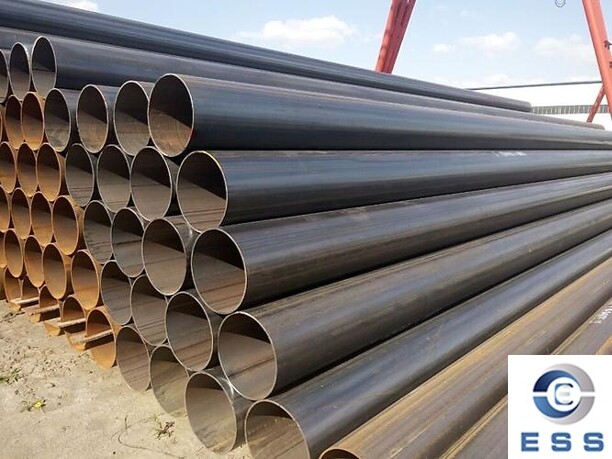
In the vast application field of steel
materials, mild
steel pipe(ms pipe full form) and carbon
steel pipe(cs pipe full form) are two common and important types of pipes. Their strength
characteristics are directly related to their application scope and use effect.
In-depth exploration of the difference in strength between the two is of key
significance for making reasonable material selection decisions in different
engineering scenarios.
Relationship between chemical
composition and basic strength
1. Mild steel pipe
The carbon content of mild steel tube is
low, generally between 0.05% and 0.25%. Carbon is one of the key elements that
determine the strength of steel. The lower carbon content makes the pearlite
content in mild steel tube relatively less and the ferrite content higher.
Ferrite is relatively soft and has good toughness and ductility, but its
strength is relatively weak. So from the perspective of basic chemical
composition, the strength of mild steel tube is relatively low.
2. Carbon steel pipe
The carbon content of carbon steel pipe is
usually between 0.25% and 0.6%. The higher carbon content makes the carbon
steel pipe contain more pearlite, which is a high-strength organization
composed of alternating ferrite and cementite lamellae. Therefore, carbon steel
pipe has higher potential strength than mild steel tube at the basic component
level.
Effect of heat treatment on strength
1. Mild steel tube
The strength improvement effect of mild
steel tube after heat treatment such as quenching is not as obvious as that of
carbon steel pipe. This is because mild steel tube forms less martensite (a
high-strength phase) during quenching due to its low carbon content. For
example, under the same quenching conditions, the hardness increase value of
mild steel tube may only be 20-30HRC (Rockwell hardness), while carbon steel
pipe may reach 40-50HRC.
However, mild steel tube can increase the
carbon content on the surface through chemical heat treatment methods such as
carburizing, thereby improving the surface hardness and wear resistance.
However, this treatment mainly improves the surface properties and has limited
improvement in overall strength.
2. Carbon steel pipe
Carbon steel pipe is more sensitive to heat
treatment. During the quenching process, the austenite structure in the carbon
steel pipe will quickly transform into martensite, thereby significantly
improving the strength. For example, after quenching and tempering, the yield
strength of the carbon steel pipe can be increased from the original 300-400MPa
to 600-800MPa.
Appropriate tempering can also improve the
toughness of the carbon steel pipe while improving the strength, preventing it
from being too brittle and hard, so that it can withstand greater loads and
impacts.
Strength in practical applications
1. Mild steel tube
It is widely used in some occasions where
the strength requirements are not particularly high. For example, in the indoor
water supply and drainage system of ordinary buildings, the working pressure is
generally low, and mild steel tubes can meet the requirements of water
transportation. Its strength is sufficient to withstand the static pressure and
flow pressure of water, and its toughness is good, which is convenient for
bending and connection operations during installation.
In the field of architectural decoration,
such as making indoor handrails, railings, etc., mild steel tubes can be easily
processed into various shapes, and can withstand external forces such as normal
human leaning and collision. Its strength is sufficient for these application
scenarios.
2. Carbon steel pipe
Performs well in applications that need to
withstand higher pressure or larger loads. For example, in oil and gas
pipelines, the pipeline needs to withstand high pressure from the internal
fluid and the forces of the external environment (such as soil pressure,
earthquakes, etc.). The high strength of carbon steel pipes can ensure that the
pipelines can operate safely and reliably under these complex working
conditions.
In the field of mechanical manufacturing,
for some shaft parts or structural components that need to withstand large
torque and impact force, carbon steel pipes can provide sufficient strength to
meet work requirements after proper heat treatment.
Summary
In summary, mild steel tubes and carbon
steel pipes have their own advantages and disadvantages in strength
characteristics, and they play an irreplaceable and important role in different
application fields. In the actual engineering material selection process, we
must fully consider the specific use environment, the required strength
performance indicators, and cost control, and weigh the pros and cons to make
the most scientific and reasonable choice, so as to ensure that the performance
of the material can perfectly match the engineering needs and achieve safe,
efficient and sustainable development of engineering construction.













 Eastern Steel Manufacturing Co.,Ltd not only improve product production and sales services, but also provide additional value-added services. As long as you need, we can complete your specific needs together.
Eastern Steel Manufacturing Co.,Ltd not only improve product production and sales services, but also provide additional value-added services. As long as you need, we can complete your specific needs together.










